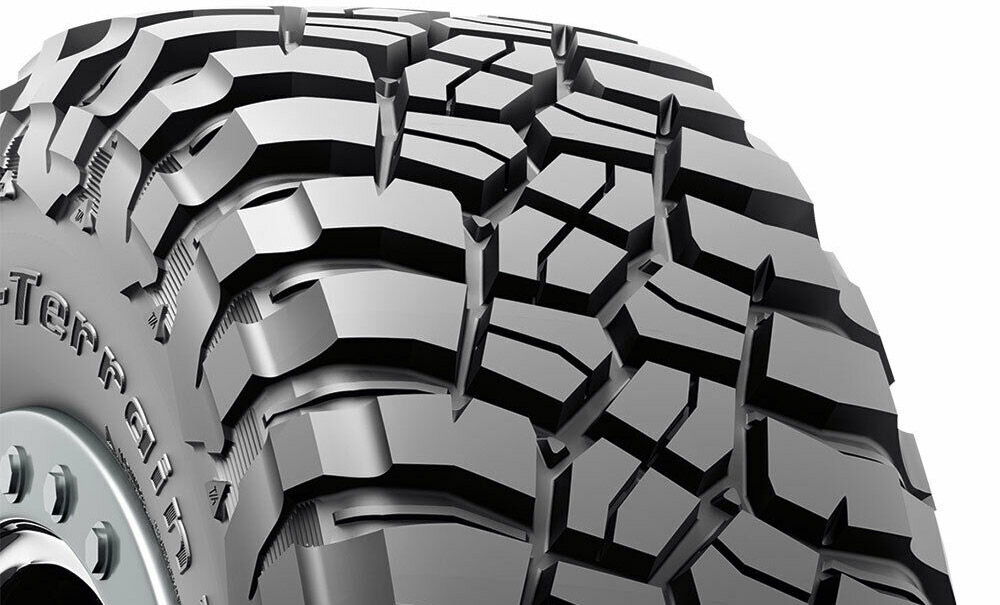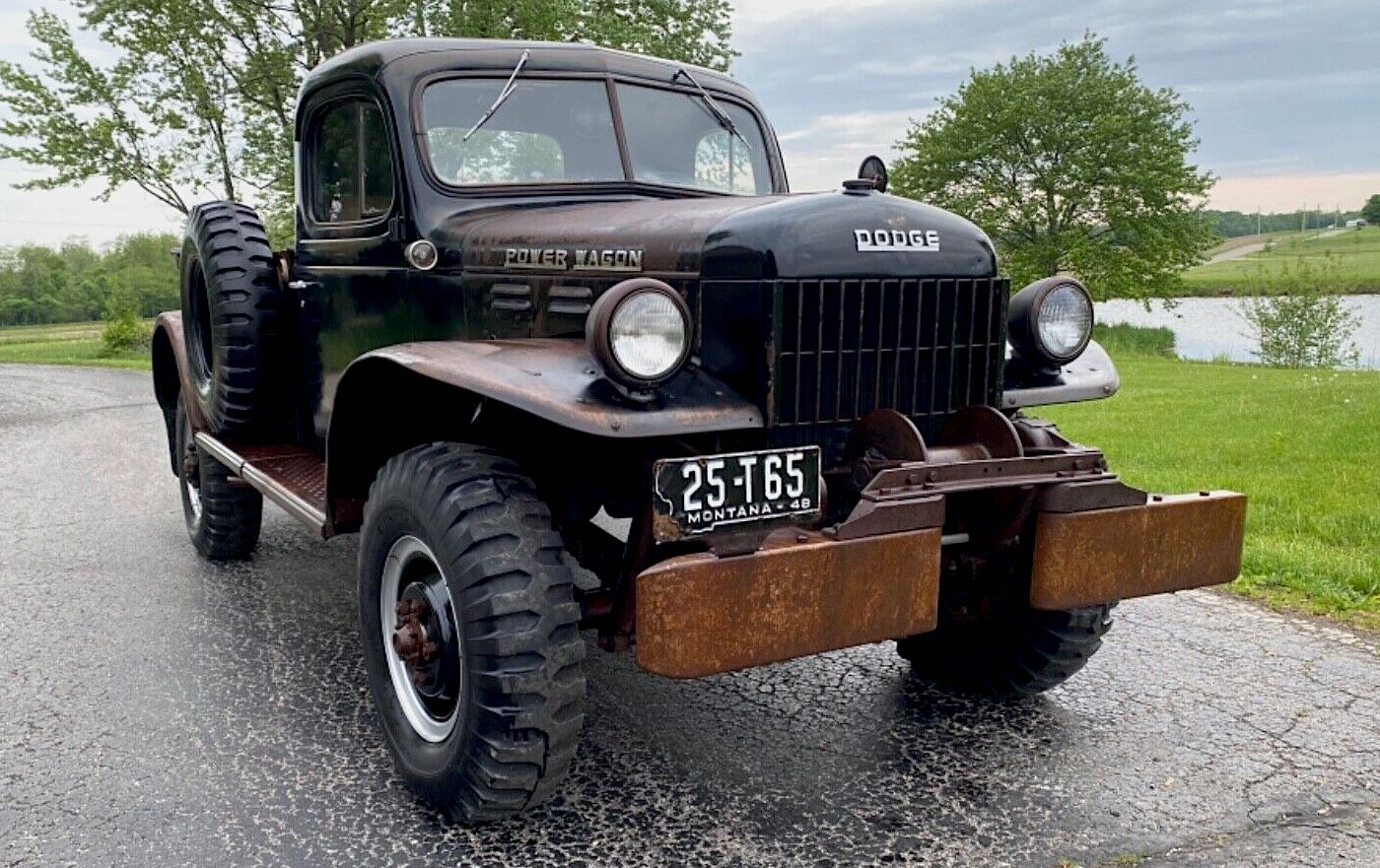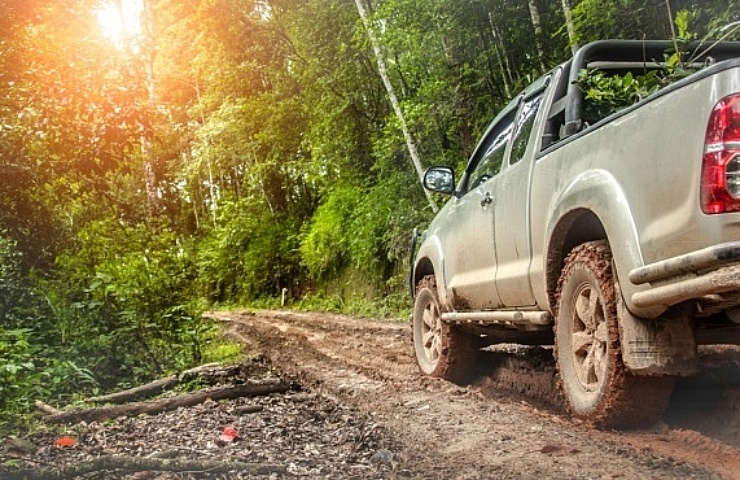There’s no better way to show the neighbors what you’ve been doing all weekend when the evidence is splattered all over your rig. But do you know how to drive safely in the mud? Better yet, do you know how to get unstuck from mud if everything goes wrong?
Before You Go

BF Goodrich’s KM3 M/T mud terrain tire
Whether you’re headed out for a weekend of adventure or simply have to get work done in the backcountry, the most important part of off-road driving is getting home safely. So be prepared for whatever the dirt may throw at you. If you’re likely to encounter mud, investing in a set of mud terrain tires is well worth it. These tires have large voids in the tread pattern, keeping the treads free of gooey muck. Check out our choices for the best tires for driving in mud.

With an old-school winch and chunky tires, this 1948 Dodge Power Wagon’s seen its share of muddy roads over the past seventy-five years.

VEVOR Kinetic Energy recovery rope
Other gear, including traction boards, tow straps, and winches, are also a good idea. But the most important rule for off-roading is never wheel alone. Having a person with a second vehicle gives you a fighting chance of escaping a bad situation. If you’re stuck, they can pull you out. If someone is injured, a buddy is there to get medical attention.
Tips For Driving In Mud
- Use four-wheel drive—low range if you have the option. This gives your vehicle four traction points to wade through a wet, sticky mess. While you may be able to drive in mud without four-wheel drive, we don’t recommend it. Having front wheels that can pull you out of puddles makes a big difference.
- Lower the air pressure in your tires. This gives your tires a wider contact patch, creating more grip. Just be sure to air back up before hitting the road.
- Keep up your momentum. Try not to brake if you need to slow down. Just let off the throttle a bit. If you brake, you risk bogging yourself down in the mud. Avoid ruts, too, because the mud is usually thicker and harder to escape the deeper you go.
How Do I Get Unstuck From Mud?
If you get stuck while driving in mud, don’t panic. Let your friends know that you’re stuck and may need help recovering with a tow or a winch. But first, try to find some traction. Saw your steering wheel side to side to try and “grab” some traction from the side of the rut you’ve created. But don’t hit the throttle too hard, or you’ll find yourself digging a deeper hole that is harder to escape.
On Your Way Back Home
Wash your truck. Caked-on mud will dry and possibly cause vibration. Mud can easily make your wheels imbalanced and even affect how well your truck brakes. Don’t forget to air the tires back up before hitting the highway.
If you’ve been driving in a lot of mud, you may need to repack your wheel bearings with grease. Depending on how deep you were, transmission, differential, and transfer case fluids could have been contaminated with water and mud too. If you frequently find yourself wheeling in the muck, consider shortening the intervals on changing these fluids.
Shop now for automotive fluids




